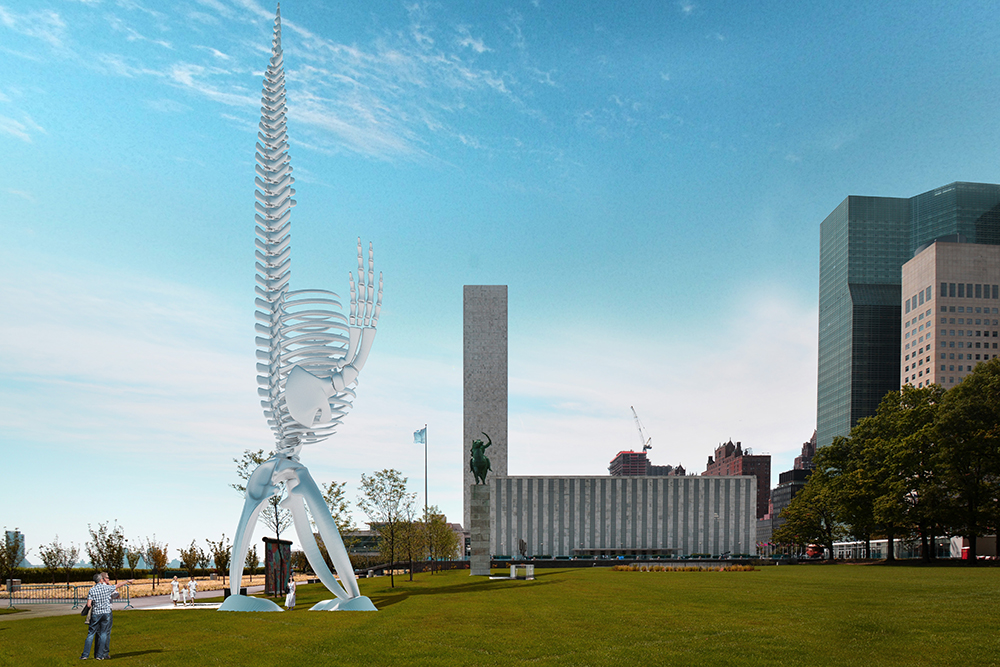Edward Burtynsky to collaborate with Queen’s on unique work of public art
January 18, 2022
Share

Today, two Queen’s University faculties announced a partnership with world-renowned Canadian photographer and Queen’s Honorary Degree recipient, Edward Burtynsky, to help realize his new public art piece titled Standing Whale.
On the heels of his critically acclaimed and highly successful Anthropocene project, Burtynsky continues to push his artistic practice into a new dimension, with the creation of his first large-scale public sculptural work – a true-to-size, artistic re-imagining of a whale skeleton, inspired by retrieved whale skeletons that washed ashore in Newfoundland in 2014.
“My hope is this public art sculpture will become a true Canadian statement: one that symbolizes our commitment to protecting the environment, our cultural institutions and heritage, as well as our efforts to ensure that our planet experiences a positive Anthropocene instead of a negative one,” says Burtynsky.
The partnership will engage the expertise and innovative thinking of faculty and students in multiple programs across the Faculty of Engineering and Applied Science, and the Faculty of Arts and Science, who will tackle the piece’s structural and conceptual challenges with the aim of bringing this artwork to life in a public setting.
Edward Burtynsky partners with Queen's University on "Standing Whale".
“Edward Burtynsky creates compelling, passionate calls to action on climate change,” says Kevin Deluzio, Dean of the Faculty of Engineering and Applied Science. “Contributing to Standing Whale represents an opportunity for our faculty and students to take on unique engineering challenges that span the disciplines of engineering but also rely on collaboration with our colleagues from the arts and sciences.”
Based on the story of a pod of North Atlantic blue whales that perished in an unprecedented ice event, Standing Whale is a thematic continuation of Burtynsky’s 40-year artistic practice looking at the impacts of humans on the planet. When the bodies of these whales washed ashore following their demise, there were only an estimated 250 of the mammals left worldwide. This pod represented four per cent of those remaining. The North Atlantic blue whale, like so many other species, is at risk of becoming a casualty of the climate crisis and Standing Whale acts as an homage to and lament for this loss.
“Through the duration of this partnership with Queen’s University and the deployment of these multidisciplinary special projects, students will have an opportunity to engage with this artwork in a tangible way and work towards achieving feats of both engineering and storytelling alongside Canada’s most prolific contemporary photographer,” says Dean Barbara Crow, Faculty of Arts and Science.